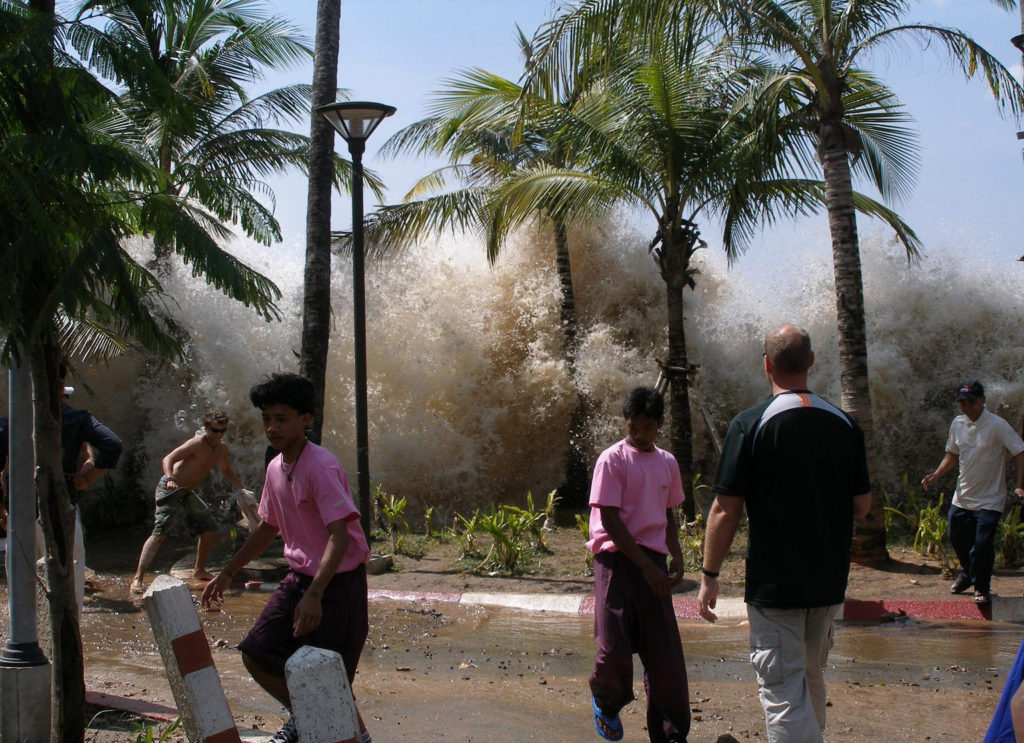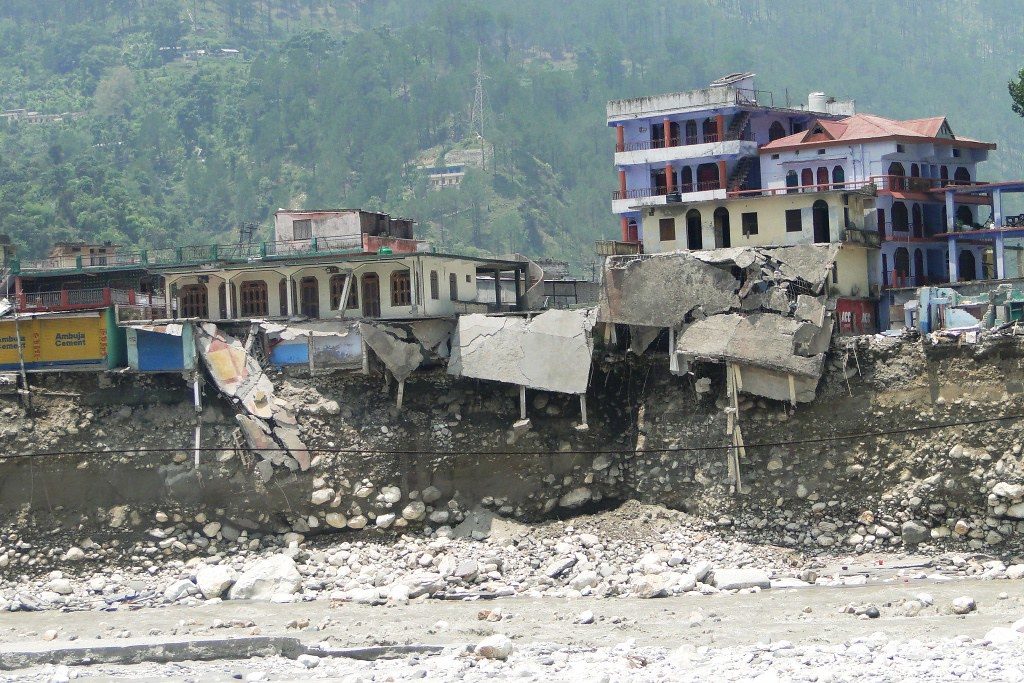Unveiling the Curtain of Disaster Management in India
By Srishty Jaura

All of us are awake now that we have a monster staring at us, but let’s look at what was happening while we were peacefully sleeping, well not peacefully! This article attempts to focus on relevant aspects of the Disaster Management Act of 2005 that has been invoked recently.
Firstly, the entire Disaster Management Division in India comes under the Ministry of Home Affairs which makes it the nodal ministry during any crisis in the country. The official website providing information on this Division is ndmindia.nic.in.
Now you know where to start looking!

Floods in Uttarkashi, India. June 2013 ( www.flickr.com )
The Act begins by stating that it applies to the whole of India including Jammu and Kashmir, which is a diversion from the mainstream as most of the Acts operational in India expressly exclude J&K from their ambit. It also allows the Central Government to use its discretion to implement any provision, at any date, in any State in the country.
It was 2011 when in MCD v Association, Victims of Uphaar Tragedy; the Supreme Court stated that even though the Act empowers the Government to decide different dates for implementation of different provisions, respecting the object of the Act was fundamental and bringing it into force promptly would be in the public interest. The Court stated that there can be no complacency in preparedness.
The fact that the Apex Court of the country needed to explain the essence of an Act six years after it had been passed, is awfully alarming.
The Act goes on to define ‘Capacity-Building’ which includes identification of existing resources and the resources to be further acquired or created. The same section defines ‘Resources’ to include manpower, services, materials and provisions. It is the resource that we slapped plates and lit candles for, that is being spoken about – the doctors and healthcare service providers. Lately, on 6th March 2020, the MHA accepted a proposal of the 15th Finance Commission of Rs 28,983 crore for the States for 2020-21. 80% of this amount is for the State Disaster Reserve Fund allocated as under:
- Response and Relief- 40% [About Rs 9,274 crore]
- Recovery and Reconstruction- 30% [About Rs 6,955 crore]
- Preparedness and ‘Capacity- Building’- 10% [About Rs 2,318 crore]
Even half of this, if applied to ‘capacity-building’, amounts to Rs 1159 crores, which appears to be adequate to provide our doctors and healthcare workers with Personal Protective Equipment (PPE). However, the headline of Business Today on 30th March 2020 read:
Raincoats instead of hazmat suits: Bengal doctors fighting coronavirus complain of protective gear shortage
The Act also talks about a National Disaster Management Authority under the Chairmanship of the PM, responsible for laying down policies, plans and guidelines for disaster management and a National Executive Committee, consisting of Secretaries to the Govt. of India. A National Plan for the whole country made by the NEC, containing measures to prevent and mitigate disasters and supervise preparedness.This was laid down in 2005.
In May 2016, in the matter of Swaraj Abhiyan v Union of India, the Supreme Court expressed as under:
We are surprised at being informed that a National Plan has not yet been drawn up under section 11 of the DM Act. Evidently, anticipating a disaster is not yet in the ‘Things to do’ list of the Union of India and ad hoc measures and knee jerk reactions are the order of the day and will continue to be so until the provisions of the Act are faithfully implemented.
Eleven precious years were lost. In the words of Peter Drucker- Time is the scarcest resource. And unless it is managed, nothing else can be.
Another example of such time-lapse is seen with regard to the State Disaster Management Authorities under the chairmanship of the CM of the State, and the District Disaster Management Authorities, chaired by the District Collector. It was not until 2nd February 2015 that the MHA sanctioned a scheme called the ‘Strengthening of SDMAs and DDMAs’, approving Rs. 42.51 crores to cover 36 States/UTs and 256 DDMAs, that was to be implemented in two phases- 2015-16 and 2018-19, which happens to be so close to COVID-19 hitting the country.
Moving on to financial affairs, chapter IX, DMA 2005, titled “Finance, Accounts, Audit”- provides for a National Disaster Response Fund. The Government may also constitute a National Disaster Mitigation Fund for exclusive mitigation projects.
Remember the Supreme Court pointing out abuse of time in May 2016? In the same case, it stated the following:
We are quite surprised that the National Disaster Mitigation Fund has not yet been set up even after 10 years of the enforcement of the DM Act. Risk assessment and risk management appear to have little or no priority as far as the Union of India or the State Governments are concerned.
It is certainly disheartening to witness the Apex Court felt the need to remind our leaders of the safety of its own citizens. This was not a small delay; it was a lag of eleven years.
Meanwhile, as per the recommendation of the 13th Finance Commission, the Government of India on 26th September 2014, did approve the National Disaster Response Reserve, as a Revolving Fund of Rs. 250 crores. This Fund was for meeting the immediate requirement of the relief materials and equipment, by maintaining an inventory of the same. Some of the provisional items to be kept in this Reserve were tents, food, medicines, blankets, etc. The inventory aimed at holding sufficient relief equipment for a minimum of 2,50,000 people in the Plains and 1,50,000 in the Mountains, implying provisions for no less than 4,00,000 people in a country with a population of 1,380,004,385 and still counting. That leaves more than a billion people in India uncovered.
Talking about numbers, the National Disaster Management website has a section named ‘Important Letters’, which contains a total of 28 letters. Out of these, 19 letters dated March 2020 onwards are about COVID-19; sending us off with merely 9 pieces of communication made during 16 years.
Leonardo da Vinci once said, “There are three classes of people: those who see, those who see when they are shown and those who do not see.”
We are being shown.
Srishty is the youngest Indian female to be an internationally qualified Golf Rules Official. Having completed her Bachelors and Masters in Political Science, she is currently pursuing Law from Faculty of Law, Delhi University.

